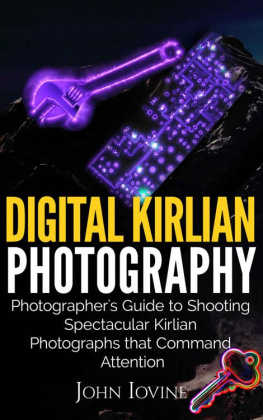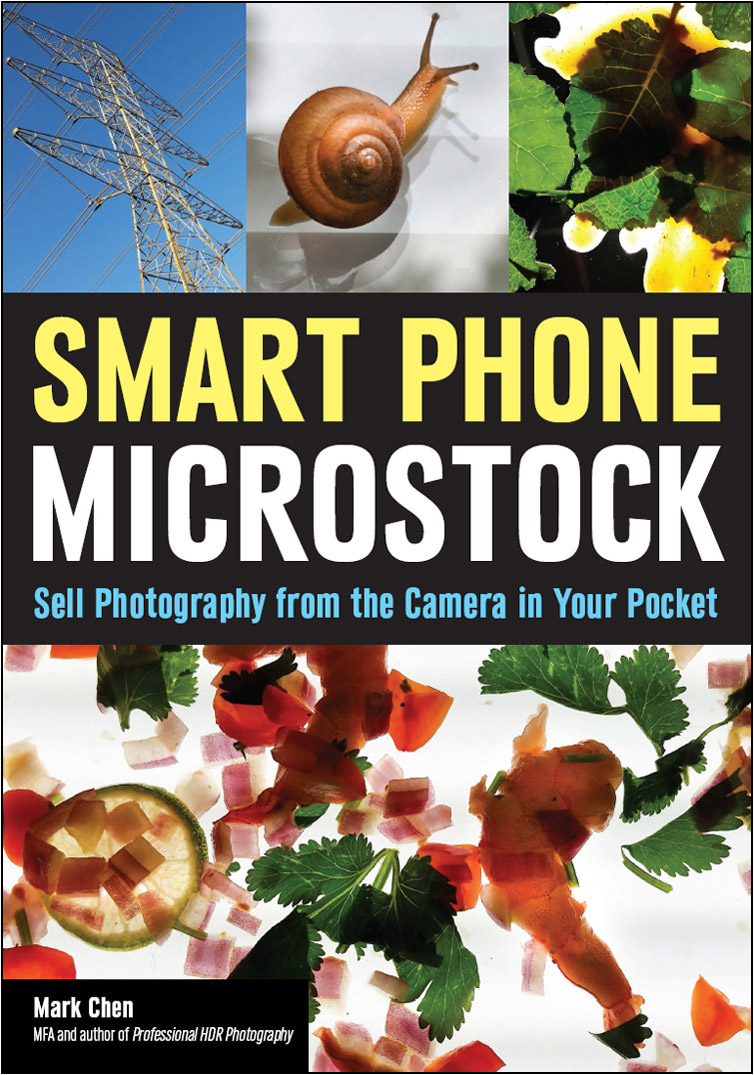
Special thanks to Evan ONeil, Linda Schaller, Michael Wooten, Chelsea Shannon, Ruth Gonzalez, and Olive Chen for enriching the content of this book.
Copyright 2016 by Mark Chen
All rights reserved.
All photographs by the author unless otherwise noted.
Published by:
Amherst Media, Inc., P.O. Box 538, Buffalo, N.Y. 14213
www.AmherstMedia.com
Publisher: Craig Alesse
Senior Editor/Production Manager: Michelle Perkins
Editors: Barbara A. Lynch-Johnt, Beth Alesse
Acquisitions Editor: Harvey Goldstein
Associate Publisher: Kate Neaverth
Editorial Assistance from: Carey A. Miller, Sally Jarzab, John S. Loder
Business Manager: Adam Richards
ISBN-13: 978-1-68203-034-9
Library of Congress Control Number: 2015953691
10 9 8 7 6 5 4 3 2 1
No part of this publication may be reproduced, stored, or transmitted in any form or by any means, electronic, mechanical, photocopied, recorded or otherwise, without prior written consent from the publisher.
Notice of Disclaimer: The information contained in this book is based on the authors experience and opinions. The author and publisher will not be held liable for the use or misuse of the information in this book.

www.facebook.com/AmherstMediaInc
www.youtube.com/c/AmherstMedia
www.twitter.com/AmherstMedia
Table of Contents
Guide
Contents






About the Author

PHOTOGRAPH BY ROSIE ISRAEL.
Mark Chen is a photographer, a digital media artist, and an activist. Based on still images and videos, he expands to media including animations, soundscapes, installations, and performances. The narratives in his work aim to raise awareness of sustainability and climate change, among other environmental and social issues. Chens exhibition path traverses locally, nationally, and internationally, including the Houston Center for Photography, Fotofest (Houston), the Arc Gallery (San Francisco), and the Artists Cabin (Taipei, Taiwan).
In addition to his career as an artist, Chen is an educator who has taught at the University of Houston, Houston Baptist University, and Houston Community College, among other institutions. He is also an avid published author, producing seven book titles on photographic art and techniques from Amherst Media. These titles include Creative Wedding Album Design with Adobe Photoshop, Flash and Ambient Lighting for Digital Wedding Photography, Unleashing the RAW Power of Adobe Camera Raw, Professional HDR Photography, Mastering Exposure, and Mastering Composition for Photographers. To learn more about Mark Chen, visit www.markchenphotography.com.
A billion photos are taken every day. That means that in the time it took you to read the last sentence, over 10,000 photos were snatchedand, presumably, most of them were taken on cell phone cameras. They are selfies, food images, pet photos, sunset images, and shots to document car accidents. They are taken at the Great Wall of China, on the way to work, and in bathrooms. They are shared on Instagram, Twitter, Facebook, and more.
Are these photos destined only to be posted on social media, liked a dozen times, and then forgotten forever?
While these photos seem to serve lots of purposes and go lots of places, there is one thing they mostly do not do: make money.
Is the new cell phonetoting generation hopelessly locked in a spiral of mass consumption, without any productivity? Are these photos destined only to be posted on social media, liked a dozen times, and then forgotten forever? Are they just taking up space on your micro SD card, doomed to be erased when more selfies demand to be squeezed into the limited memory?
If you are one of the few exceptions who wants to break the mold, this book provides you with a powerful answer: stock photography.
In a nutshell, stock photography is literally photos in an inventory. Contrary to photos produced for assignments (say, for a wedding, for a new building, or to showcase a specific product, etc.) these photos are made by photographers who presume their usefulness to someone who might later buy them. For example, the photographer might think, If I take an image of that light beam coming down from the clouds, churches might use it as an image to show spiritual inspiration. Likewise, an image of a nice bowl of salad might be used to promote healthy eating, or a headshot of a pretty girl might be a good image to promote a dating web site. These images are then put together in a database, ready to be searched by their potential buyers.

You can sell stock photography yourself, through your own web site. However, in this age of mass information shared in a global marketplace called the Internet, it is unlikely that your web site could attract as much attention as the site of a stock photography agencya one-stop shopping site where buyers can find cataloged images by thousands of photographers. iStock, Shutterstock, Getty Images, and Fotolia are examples of stock photography agencies. The process for getting on-board at one of these agencies ranges widely. For some, you simply sign up. Some require a review of sample images. Others are by invitation only.

Image P1. KEYWORDS: Bay Area; Bay Bridge; beak; claw; feather; gull; Laridae; San Francisco; San Francisco Bay; seagull; wing. (More on keywords in )
Stock photography is used by advertising agencies, bloggers, churches, students, and everyone else in the world who needs to use photos in any medium of presentationmagazines, posters, web sites, PowerPoint projections, etc. Whether or not they are a trained professional, the person who searches for the stock photo is considered a graphic designer.
What is graphic design? The Merriam-Webster Dictionary defines it as the art or profession of using design elements (as typography and images) to convey information or create an effect; also: a product of this art. Imagine that a graphic designer is charged to design something. This process often requires the use of one or more images. Assuming she does not have this image, and that producing it would not be feasible (or efficient, or cost-effective), thats when she turns to a stock photo agency. She provides the agency the criteria for the image and that information is used to determine a list of candidates. She sees an ideal image among all the candidates, pays the agency, and obtains a right to use that image.



















